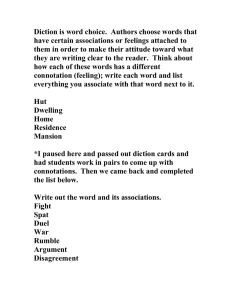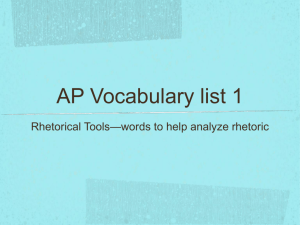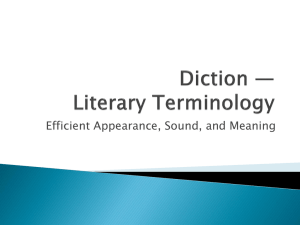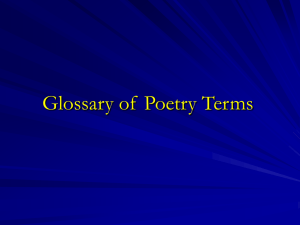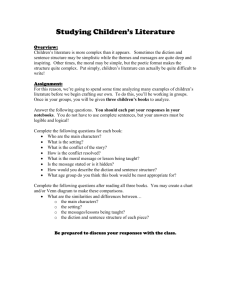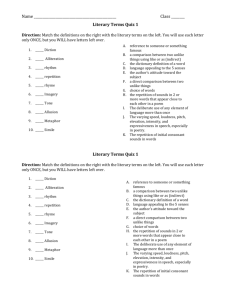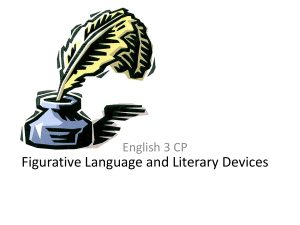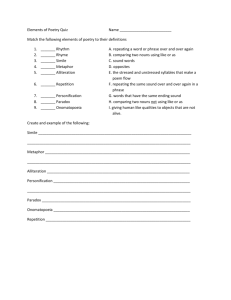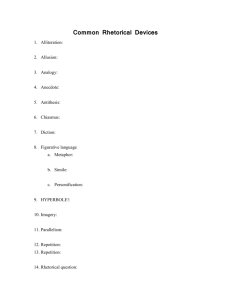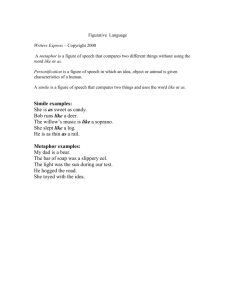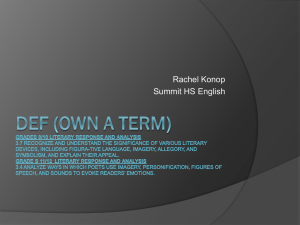The Book Thief literary devices
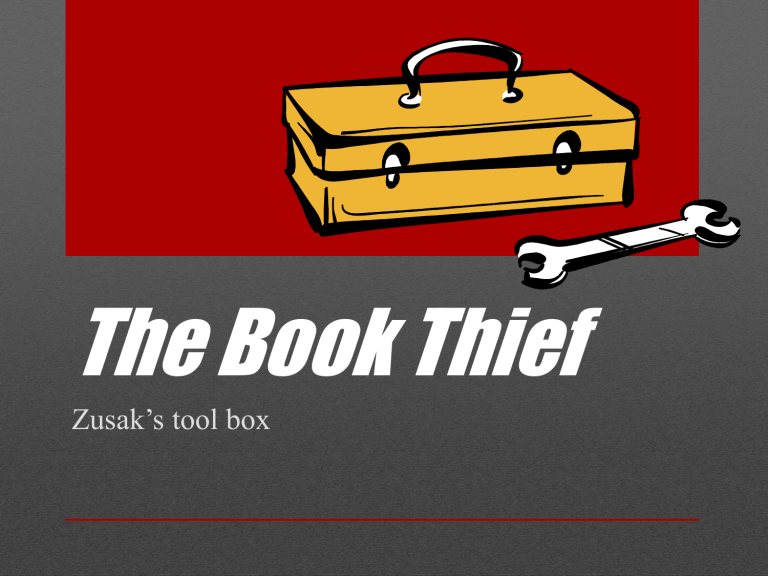
The Book Thief
Zusak’s tool box
•
IDENTIFY them when reading
•
CONNECT them to theme and meaning
•
USE these words in speech and writing
•
NOTE when you find them in the novel
Goal
•
An indirect reference to a person, event, statement, theme, or work
•
Allusions carry a connotation when readers know them; the author can say a lot by saying a little
•
Widely and well read; independent reading
Allusion
•
Simile: comparison with like or as
•
Metaphor: comparison without like or as
Simile vs Metaphor
•
Sensory language which allows the reader to feel, see, taste, touch, and/or hear the object of description
Imagery
•
A concrete object which stands for an idea(s), and/or attitude(s)
•
Flag
•
Circle
•
Heart
Symbol
•
Giving a non-human thing human characteristics
Personification
•
A humorous scene or passage which interrupts what is normally a serious and/or heavy text
•
Designed to lighten the mood
•
Shakespeare uses comic relief in tragedies
Comic relief
•
A contradiction, strangeness, inconsistency between what is expected/what appears and what happens/reality
•
Various types, of which will come later
Irony
• Denotation a word’s literal/definition meaning
• Connotation: a word’s social/implied meaning
Diction: word choice and/or type of language used
•
Prose vs. poetry?
•
Diction which looks like word choice which would be found in a poem
•
Unusual syntax
•
Abundance of figurative language
•
Heavy concentration of literary devices
Poetic diction
•
Sensory language which combines 2+ senses
•
Red hot
•
Frigid tone
•
Heavy silence
Synesthesia
•
A story which represents 2 elements: the literal and a symbol of something else
•
Read
The Pilgrim’s Progress or
Animal Farm
Allegory
•
Words that look like how they sound
•
Hiss
•
Sizzle
Onomatopoeia
•
Consonance
: repetition of consonants
•
Assonance: repetition of vowels
Alliteration: repetition of sounds
•
IDENTIFY them when reading
•
CONNECT them to theme and meaning
•
USE these words in speech and writing
•
NOTE when you find them in the novel

